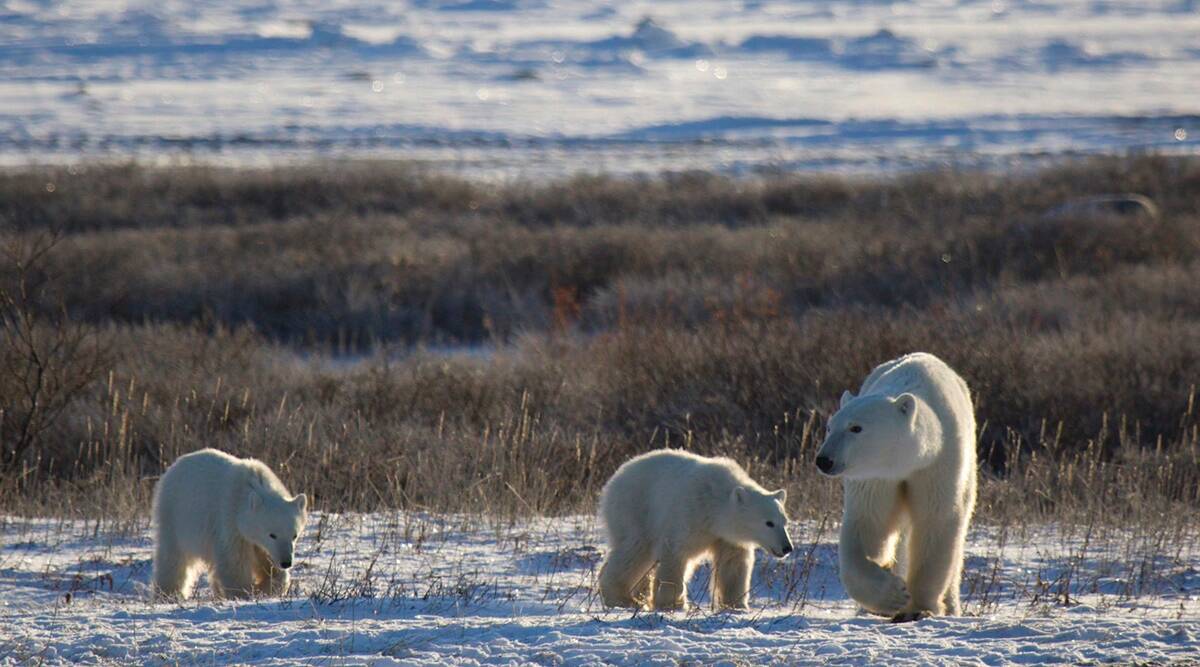Published on: November 8, 2021

EFFECTS OF GLOBAL WARMING ON ARCTIC ICE & POLAR BEARS
EFFECTS OF GLOBAL WARMING ON ARCTIC ICE & POLAR BEARS

NEWS
Scientists and advocates point to polar bears, marked as “threatened” on the endangered species list, as the white-hot warning signal for the rest of the planet.
THE STATE OF SEA ICE
- Arctic sea ice — frozen ocean water — shrinks during the summer as it gets warmer, then forms again in the long winter. How much it shrinks is where global warming kicks in, scientists say. The more the sea ice shrinks in the summer, the thinner the ice is overall, because the ice is weaker first-year ice.
- The Arctic has been warming twice as fast as the rest of the world. In some seasons, it has warmed three times faster than the rest of the globe.
- Reason for warming
- “Arctic amplification”
- Essentially, white ice in the Arctic reflects heat. When it melts, the dark sea absorbs much more heat, which warms the oceans even more quickly
THE POLAR BEAR CONNECTION
- There are 19 different subpopulations of polar bears in the Arctic.
- Bears in southernmost regions are really in trouble
- Shrinking sea ice means shrinking polar bears, literally.
- In the summertime, polar bears go out on the ice to hunt and eat, feasting and putting on weight to sustain them through the winter.
- They prefer areas that are more than half covered with ice because it’s the most productive hunting and feeding grounds.
- The more ice, the more they can move around and the more they can eat.
- One sign of problem – A higher proportion of cubs are dying before their first birthdays.
- Polar bears are land mammals that have adapted to the sea. The animals they eat — seals and walruses mostly — are aquatic.
- In recent years the sea ice has retreated far offshore in most summers. That has forced the bears to drift on the ice into deep waters — sometimes nearly a mile deep — that are devoid of their prey

